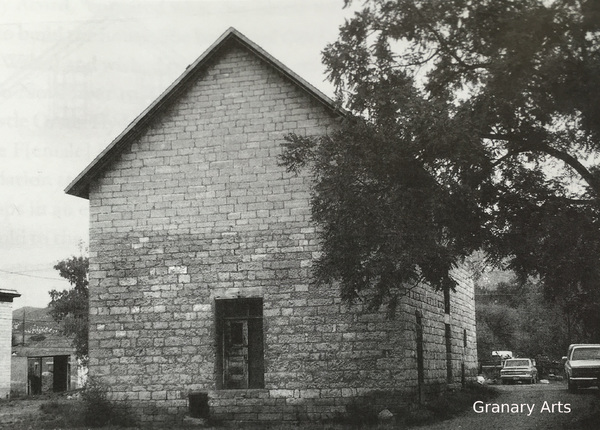Dublin Core
Title
Description
You may be familiar with the Relief Society, a women’s organization within the Church of Jesus Christ of Latter-day Saints, and the charitable work it does within Utah communities. In the 1800s, members of the Relief Society in the Sanpete Valley settlement of Ephraim leveraged the town's Granary building -- along with their own labor -- to support their rural community.
Built in the early 1870s on Ephraim's Main Street, the Relief Society Granary building originally operated as a combined tithing office, granary, and storage facility for the neighboring Co-operative Mercantile. Relief Society members used the Granary to store their wheat inventories collected as part of a grain saving program mandated by the LDS Church. For years, the Church had been encouraging congregations throughout the Utah Territory to store grain for times of need, but it was only in 1876 when the Relief Society took over, that the effort actually worked. Church leaders made sure that women had autonomy in running the operation and that if men needed grain, they must ask the women. In Ephraim, the Granary was independently operated by women who gathered wheat, wool, and eggs, and other resources for charity. By 1893, society members in Sanpete had on hand 8,536 bushels of wheat, a true accomplishment when they and their families had so little.
Charitable efforts did not stop at the Granary, however. Women worked to help their community by washing and laying out the dead. They assisted in births, nursed the sick, and made clothing, quilts, and cloth for those in need. In addition to supporting the poor, the women collected donations for construction projects such as the LDS Church Temple in nearby Manti.
The Ephraim Relief Society purchased the Granary in 1899, owning the building at a time when it was uncommon for women to have property in their own names. The group sold it in 1915, and after World War II, the Granary fell into disrepair and was nearly demolished before historic preservation efforts saved the structure. Today, the Granary in Ephraim is one of nine remaining in Utah, and stands as a cherished monument to the successful wheat storage program and the critical work of rural Utah women.
Creator
Source
_______________
See Rhonda Lauritzen, “History of the Ephraim Relief Society Granary,” Granary Arts, 2019.

